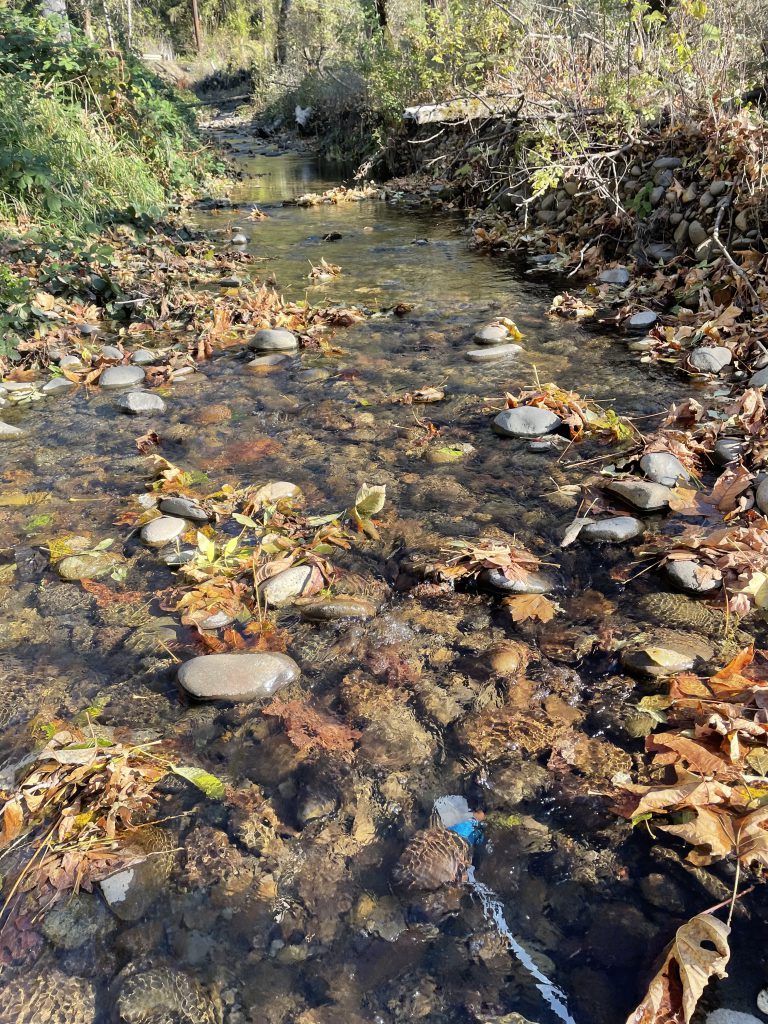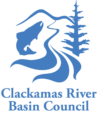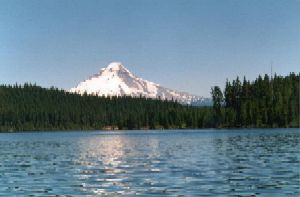Chum Salmon Surveying using eDNA
Kelcee L. Smith, Ph.D.
Chum Salmon Reintroduction Coordinator
Oregon Department of Fish and Wildlife
At one time, Chum Salmon (Oncorhynchus keta) were one of the most encountered salmonids in the
Lower Columbia River, but today, they are one of the rarest. To find these fish and restore their populations, the Program to Restore Oregon’s Chum Salmon (PROCS) has partnered with the Clackamas River Basin Council to survey the Clackamas River basin using environmental DNA (eDNA). Environmental DNA is an effective way to determine the presence of rare species in a system without the laborious efforts and costs associated with physical surveys.
How does eDNA work?
Collecting eDNA is simple. It only requires a water sample from the stream that Chum Salmon are suspected to be in. If Chum Salmon are present in the stream, their DNA will be in the water, and can be collected in the water sample. For each sample, water is pumped through a filter that collects any DNA from the water. The filter is taken back to a lab, where the DNA is isolated and tested to determine which species were present in the system. Scientists in the lab can test for any species’ DNA they think might be in the sample: frogs, turtles, fish, crawfish, plants, or parasites. With these methods, fish can be detected up to 1 kilometer upstream for as long as ten days. This means that PROCS can check for Chum Salmon in specific areas without seeing the actual fish, even if it was there, but later moved.
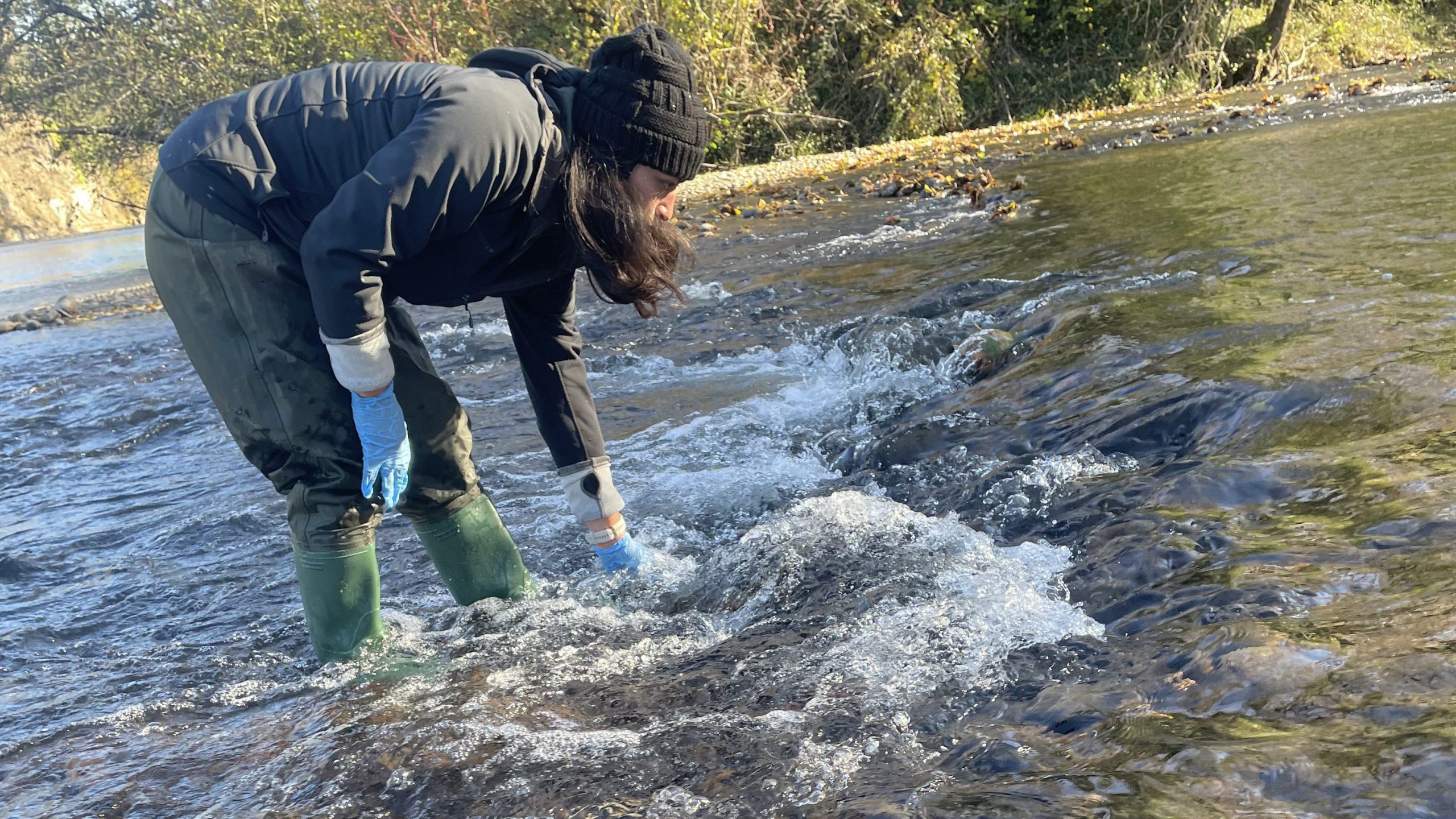
Why are Chum Salmon rare in the Clackamas River?
Chum Salmon used to occupy the Clackamas River and its tributaries, but the fish is very rare in the
system today. This absence is mainly due to spawning habitat loss and decline. Chum Salmon adults
typically spawn in the lower portions of the watershed, so any disturbances upstream (e.g., logging,
sediment runoff, pesticides) are compounded over the course of the stream and have a greater impact
on downstream areas. Chum Salmon also prefer areas with cold-water seeps or springs, streams with
low gradient, and systems with few or low barriers (they don’t like to jump!).
Chum Salmon fry are also sensitive to environmental conditions, especially temperature. After hatching and emerging, Chum Salmon fry spend very little time in their natal streams. Unlike other species that stay for months or years (e.g., Coho Salmon, Steelhead), Chum Salmon fry swim to the Lower Columbia River estuary in a matter of weeks and are in marine waters before they’re six months old. Chum Salmon fry know when to start moving out of smaller streams based on water temperature. As water temperature increases due to changes in habitat, dams restricting flow, or Climate Change, Chum Salmon fry begin their migration at the wrong time. A delayed migration means that they are more likely to encounter predators or parasites that can be lethal.
Are Chum Salmon protected?
Overharvest and heavy habitat modifications in the early 20th century eventually caused Chum Salmon populations to collapse in the Lower Columbia River basin. Because of these declines, both Washington and Oregon prohibited landing Chum Salmon by the mid-1990s and by 1999, Chum Salmon were listed on the Endangered Species Act at Threatened in the Lower Columbia River. Today, in Oregon, only 2 of the 17 historically occupied tributaries have spawning populations of Chum Salmon.
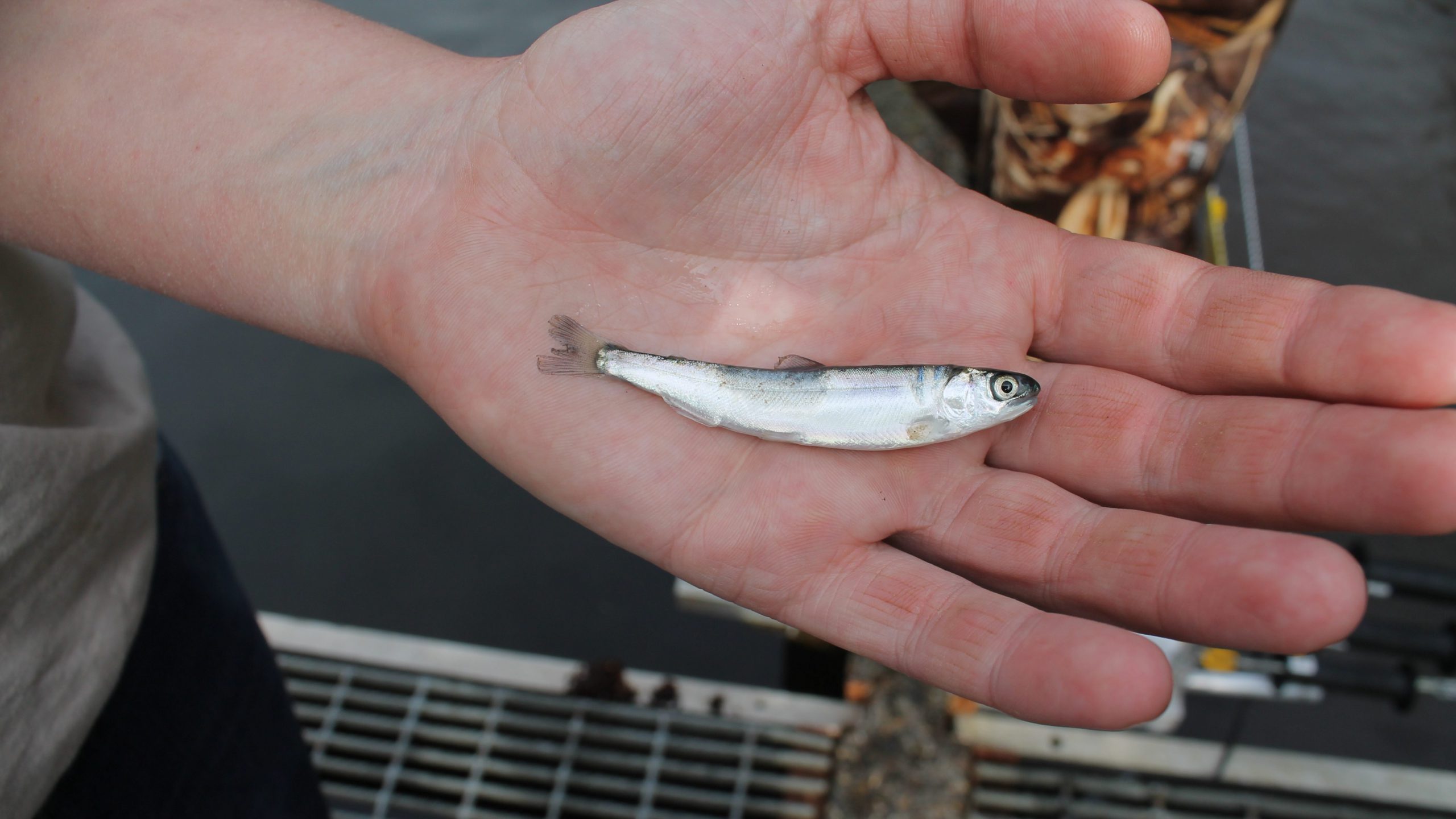
What is ODFW doing to recover Chum Salmon?
To re-establish Chum Salmon populations in the state, the Oregon Department of Fish and Wildlife
(ODFW) created the Program to Restore Oregon’s Chum Salmon (PROCS) in 2010. PROCS uses a four-
pronged approach to restore Chum Salmon in Oregon tributaries:
- Establish and maintain a conservation broodstock,
- Guide and participate in habitat restoration projects,
- Monitor reintroduction and recovery efforts, and
- Conduct research on any limiting factors that may be preventing successful recovery of the species in Oregon.
Over the last decade, these efforts have primarily been focused in the coastal region (i.e., Youngs Bay, Big Creek and Clatskanie River Recovery Populations), where most Chum Salmon return to spawn on their own. However, monitoring efforts are expanding to other recovery populations, especially as reintroduction efforts increase and recovery occurs.
What can you do to help?
Get involved with Chum Salmon recovery in Oregon or learn more. PROCS is always looking for volunteers to help with projects throughout the year. Sign up here. Get involved with Chum Salmon eDNA sampling in the Clackamas River this spring. The Clackamas River basin Council will be recruiting volunteers to help collect water samples.
Tell us about your Chum Salmon story in the Clackamas River: do you remember them in the Clackamas, did your grandpa take you fishing for them back in the day, have you seen one recently? Email Kelcee at: Kelcee.L.Smith@odfw.oregon.gov.
